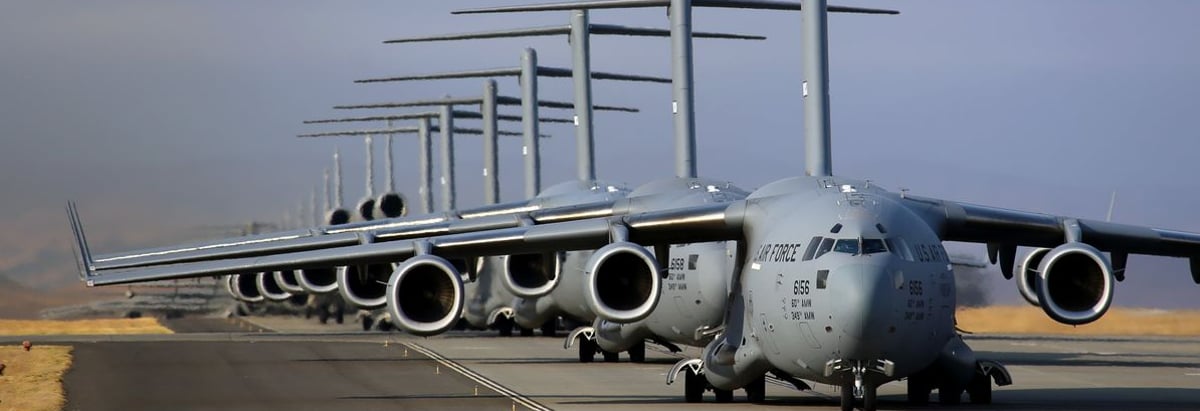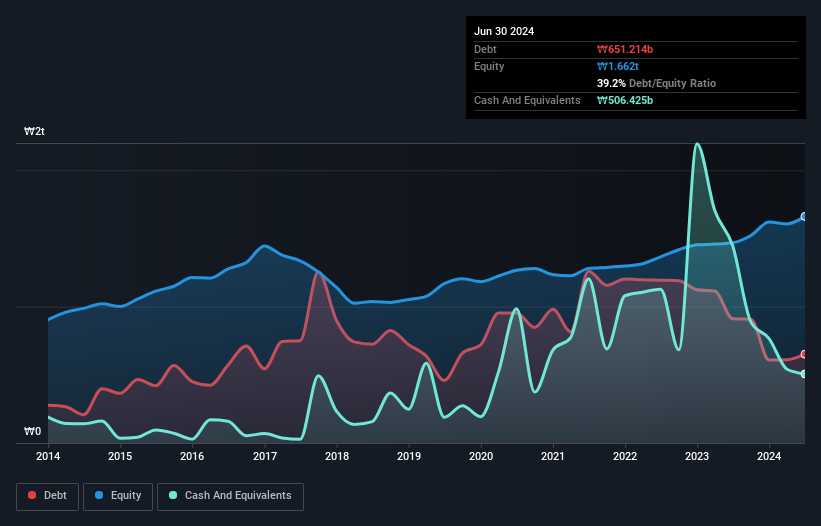- South Korea
- /
- Aerospace & Defense
- /
- KOSE:A047810
We Think Korea Aerospace Industries (KRX:047810) Can Stay On Top Of Its Debt

Howard Marks put it nicely when he said that, rather than worrying about share price volatility, 'The possibility of permanent loss is the risk I worry about... and every practical investor I know worries about.' So it seems the smart money knows that debt - which is usually involved in bankruptcies - is a very important factor, when you assess how risky a company is. We note that Korea Aerospace Industries, Ltd. (KRX:047810) does have debt on its balance sheet. But the real question is whether this debt is making the company risky.
When Is Debt A Problem?
Debt and other liabilities become risky for a business when it cannot easily fulfill those obligations, either with free cash flow or by raising capital at an attractive price. If things get really bad, the lenders can take control of the business. However, a more frequent (but still costly) occurrence is where a company must issue shares at bargain-basement prices, permanently diluting shareholders, just to shore up its balance sheet. Having said that, the most common situation is where a company manages its debt reasonably well - and to its own advantage. The first thing to do when considering how much debt a business uses is to look at its cash and debt together.
Check out our latest analysis for Korea Aerospace Industries
What Is Korea Aerospace Industries's Net Debt?
You can click the graphic below for the historical numbers, but it shows that Korea Aerospace Industries had ₩651.2b of debt in June 2024, down from ₩910.4b, one year before. However, it also had ₩506.4b in cash, and so its net debt is ₩144.8b.

How Healthy Is Korea Aerospace Industries' Balance Sheet?
We can see from the most recent balance sheet that Korea Aerospace Industries had liabilities of ₩4.43t falling due within a year, and liabilities of ₩1.46t due beyond that. Offsetting this, it had ₩506.4b in cash and ₩376.2b in receivables that were due within 12 months. So its liabilities outweigh the sum of its cash and (near-term) receivables by ₩5.01t.
This is a mountain of leverage relative to its market capitalization of ₩6.37t. Should its lenders demand that it shore up the balance sheet, shareholders would likely face severe dilution.
We use two main ratios to inform us about debt levels relative to earnings. The first is net debt divided by earnings before interest, tax, depreciation, and amortization (EBITDA), while the second is how many times its earnings before interest and tax (EBIT) covers its interest expense (or its interest cover, for short). Thus we consider debt relative to earnings both with and without depreciation and amortization expenses.
Korea Aerospace Industries's net debt is only 0.32 times its EBITDA. And its EBIT easily covers its interest expense, being 76.8 times the size. So you could argue it is no more threatened by its debt than an elephant is by a mouse. Better yet, Korea Aerospace Industries grew its EBIT by 257% last year, which is an impressive improvement. That boost will make it even easier to pay down debt going forward. There's no doubt that we learn most about debt from the balance sheet. But it is future earnings, more than anything, that will determine Korea Aerospace Industries's ability to maintain a healthy balance sheet going forward. So if you want to see what the professionals think, you might find this free report on analyst profit forecasts to be interesting.
Finally, a company can only pay off debt with cold hard cash, not accounting profits. So the logical step is to look at the proportion of that EBIT that is matched by actual free cash flow. Over the last three years, Korea Aerospace Industries reported free cash flow worth 16% of its EBIT, which is really quite low. That limp level of cash conversion undermines its ability to manage and pay down debt.
Our View
Korea Aerospace Industries's interest cover was a real positive on this analysis, as was its EBIT growth rate. Having said that, its conversion of EBIT to free cash flow somewhat sensitizes us to potential future risks to the balance sheet. Considering this range of data points, we think Korea Aerospace Industries is in a good position to manage its debt levels. Having said that, the load is sufficiently heavy that we would recommend any shareholders keep a close eye on it. When analysing debt levels, the balance sheet is the obvious place to start. But ultimately, every company can contain risks that exist outside of the balance sheet. To that end, you should be aware of the 1 warning sign we've spotted with Korea Aerospace Industries .
If, after all that, you're more interested in a fast growing company with a rock-solid balance sheet, then check out our list of net cash growth stocks without delay.
Valuation is complex, but we're here to simplify it.
Discover if Korea Aerospace Industries might be undervalued or overvalued with our detailed analysis, featuring fair value estimates, potential risks, dividends, insider trades, and its financial condition.
Access Free AnalysisHave feedback on this article? Concerned about the content? Get in touch with us directly. Alternatively, email editorial-team (at) simplywallst.com.
This article by Simply Wall St is general in nature. We provide commentary based on historical data and analyst forecasts only using an unbiased methodology and our articles are not intended to be financial advice. It does not constitute a recommendation to buy or sell any stock, and does not take account of your objectives, or your financial situation. We aim to bring you long-term focused analysis driven by fundamental data. Note that our analysis may not factor in the latest price-sensitive company announcements or qualitative material. Simply Wall St has no position in any stocks mentioned.
About KOSE:A047810
Korea Aerospace Industries
Manufactures and sells fixed and rotary wing aircrafts, and airframe products in South Korea.
Excellent balance sheet and good value.
Similar Companies
Market Insights
Community Narratives




